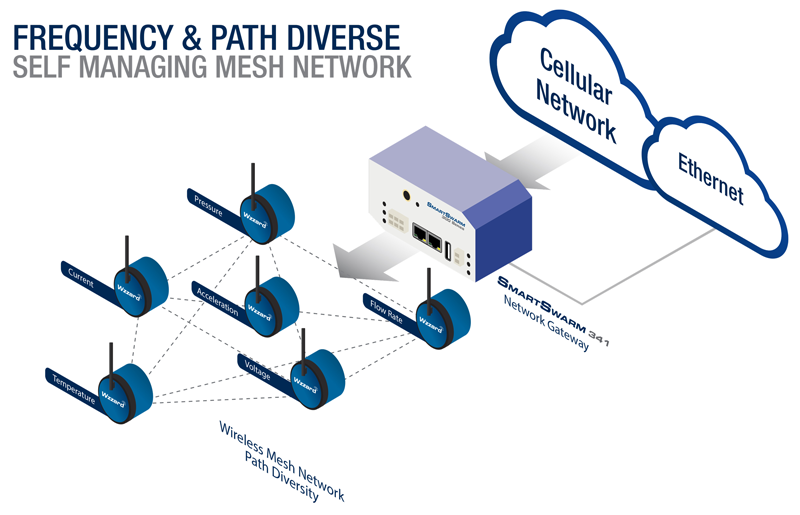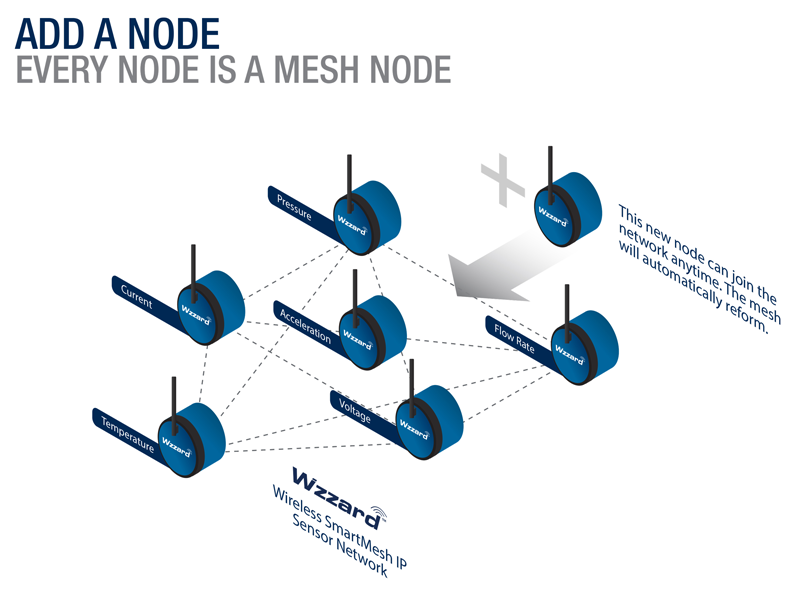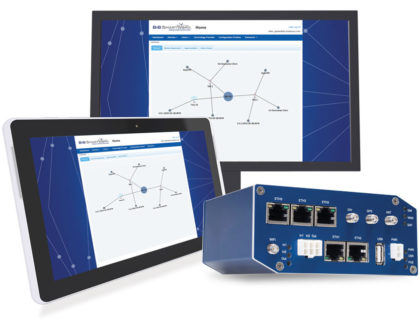What is SmartMesh IP?
SmartMesh IP is defining the way to connect smart devices. With advanced network management and comprehensive security features, SmartMesh IP delivers reliable, scalable, energy efficient wireless sensor connectivity. Using up to 8 times less power than other solutions, SmartMesh IP is the industry’s most energy-efficient wireless mesh sensing technology even in harsh, dynamically changing RF environments. It is an excellent way to create a smart, low power network infrastructure.
Based upon the wireless IEEE 802.15.4e standard, SmartMesh IP creates full-mesh networks, sometimes referred to as “mesh-to-the-edge” networks. SmartMesh IP networks use a “triple-play” of wireless mesh technologies—time diversity, frequency diversity, and physical diversity—to assure reliability, resiliency, scalability, power source flexibility, and ease-of-use. At the core the technology is an intelligent mesh network with advanced algorithms and power saving technologies that enable powerful features not available from other WSN providers including:
- Ultra low power consumption
- Deterministic power management and optimization
- Auto-forming mesh technology for a self-healing and self-sustaining network
- Dynamic bandwidth support, load balancing and optimization
- Network management and configuration
- Zero collision low power packet exchange
- Scalability to large, dense, deep networks
The SmartMesh network architecture is based on Time Synchronized Mesh Protocol (TSMP). TSMP is a full networking stack that is compatible with the IEEE 2.4 GHz 802.15.4 2006 radio standard. TSMP is a building block of the ISA100.11a standard from the International Society of Automation. The TSMP includes a Time Slotted Channel Hopping (TSCH) media access layer (MAC). TSCH works by dividing time into ‘slots’, and providing a mechanism to map time slots to channels with a pre-assigned hopping sequence.
The built-in SmartMesh intelligence utilizes TSMP and TSCH to ensure:
- Nodes know precisely when to talk, listen, or sleep
- Packet exchanges are synchronized
- No packets collide on the network
- Every packet is scheduled and synchronized for energy efficiency with no extra preamble (Tx side) or guard interval time (Rx side)
Network synchronization also enables pair-wise channel hopping – also known as frequency diversity – providing important benefits throughout the network:
- Multiple transmissions can occur simultaneously, increasing network bandwidth
- Automatically changes channels to avoid inevitable packet collisions
- Networks can be both dense and scalable without creating debilitating RF interferences
SmartMesh networks provide redundant routing to the network gateway, as every node in the mesh network has the same routing capabilities. Each node is able to receive data from any other network node that is within range, and it can transmit data to any other network node that is within range. If one path to the network gateway fails, the network nodes will immediately detect it and reroute through another. Individual nodes make routing decisions based upon which other nodes are currently available, proximity to the network gateway, and current traffic load. This makes the network self-forming and self-healing, as no single node represents the only path to the gateway. (Fig. 1) This also makes mesh networks highly scalable, as devices can transmit data over long distances by passing data through intermediate devices to reach more distant ones, with no need for centralized control or a high-power transmitter/receiver that is able to communicate with all of the networked devices. (Fig. 2)

Robust and Resilient
Multi-path RF interference is unavoidable in real life environments. With the time-synchronized channel hopping to identify the best available connections, SmartMesh IP mesh networks can dynamically recognize interferers and adapt channel usage to avoid the channels that are consistently unreliable.
When combined with redundant routing capabilities, channel hopping gives a SmartMesh IP network five nines ( >99.999%) data reliability, even in the most challenging RF environments.
Battery Life
SmartMesh IP devices sleep at ultra-low power between scheduled communications, typically resulting in a duty cycle of < 1%. Nodes know precisely when to talk, listen or sleep, and data packets won’t collide on the network. Unlike other mesh technologies, no power and time-consuming path rediscovery is required.
Security
SmartMesh networks are among the most secure mesh networks available. All traffic in a SmartMesh network is protected by end-to-end encryption, message integrity checking, and device authentication. Additionally, the SmartMesh network manager contains applications that enable the secure joining of the network, key establishment, and key exchange.
Using 128 bit AES-based encryption with multiple keys, SmartMesh also includes message integrity check (MIC) to protect transmitted data with message authentication codes; automatic synchronized key changeovers and device authentication.

Recommended Posts

3 Questions to Ask Before Selecting an LTE WAN
June 15, 2018


